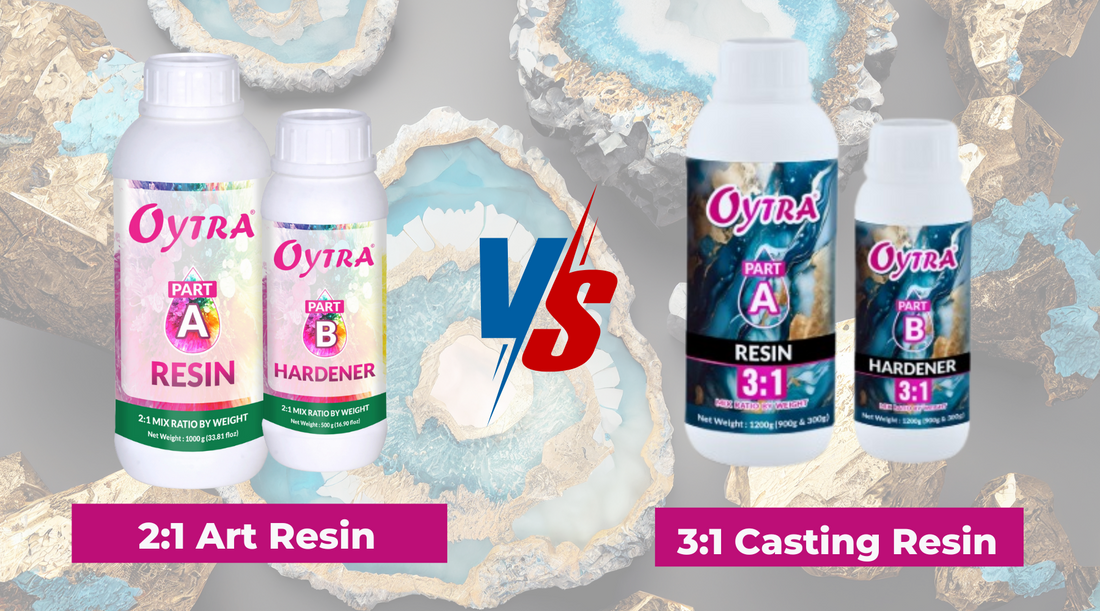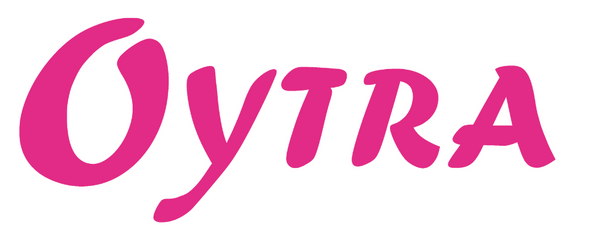
2:1 Art Resin vs 3:1 Casting Resin- Difference explained.
Share
If you’re new to the world of resin art, chances are you’ve come across a confusing mix of terms—art resin, casting resin, deep pour resin, 2:1 ratio, 3:1 ratio—and wondered what it all means. While resin typically looks like a shiny solution, there are so many types of resins out there!
Watch out for Oytra’s explainer series for beginners, where we pour out the basics just like resin into a mold—slow, smooth, and designed to set the perfect foundation for your creative journey.
In this blog, we explain 1.} how 2:1 Art Resin is different from 3:1 casting resin, 2.} the general differences between the two, and 3.} the logic behind resin-to-hardener ratios—2:1 and 3:1.
The Difference Between Art Resin and Casting Resin Explained-
Art Resin, also known as epoxy art resin, is a versatile type of resin that can be used for both casting and coating. It is used for creating resin earrings, pendants, small coasters, bookmarks, and other items, as well as for applying a thin, glossy lamination over paintings and other artworks. Typically, art resin can be poured to a maximum thickness of 10 mm. Pouring it thicker can lead to problems like overheating, cracking, or uneven curing.
Deep Pour Resin is a specialized type of epoxy resin, specifically designed for thick casting projects that cannot be achieved using art resin. It can be poured in layers up to 2 inches (or more) in a single pour without overheating or cracking, making it ideal for applications where depth and durability are essential. River-style kitchen countertops, table surfaces, and wall art are among the trending, best-suited usages for deep-pour epoxy resin.
2:1 Art Resin vs 3:1 Casting Resin—Mixing Ratio Differences.
Whenever a resin product name carries the labels “2:1” or “3:1,” it refers to the ideal blending proportion for resin-to-hardener.
2:1 means for every 2 parts of resin solution, it's recommended to use 1 part of the hardener solution. Likewise, for a 3:1 product, 3 parts of the resin solution need 1 part of the hardener solution.
Thus, the difference between 2:1 Art Resin and 3:1 Casting Resin is the recommended resin-to-hardener proportion for each and the pour thickness that each can achieve, as mentioned in the previous section.
For example, if you buy OYTRA ART RESIN - 2:1, then for every 30 grams of resin, you’ll need 15 grams of hardener. If you buy OYTRA CASTING RESIN—3:1 ratio—for every 30 grams of resin, you would require 10 grams of hardener.
You can perform this calculation seamlessly by using a Weighing Scale Machine.
2:1 Art Resin vs. 3:1 Casting Resin—Variations in Features & Uses.
It's worth noting that the 2:1 Art Resin and 3:1 Casting Resin not only differ in mixing proportions but also in their physical properties and applications, owing to these mixing ratio differences.
Initially, 3:1 was the commonly used formulation. However, later resin artists recognized its limitations. Due to its higher proportion of hardener, 3:1 typically cures to a more rigid and brittle state, making creations less durable over the long term.
As it is less expensive and allows for plenty of wiggle room for minor mishaps and messy results! This resin is the ideal option for beginners. You won't have to worry about wasting a lot of money! Furthermore, durability is probably not your top concern; you will have a final product that will serve as a sufficient reminder of your initial attempt :)
On the other hand, 2:1 Art Resin offers great durability and is best for applications where strength and flexibility are important.
Ideal for sellers and small resin product businesses that need durable, high-quality finishes to ensure quality products for their consumers.
